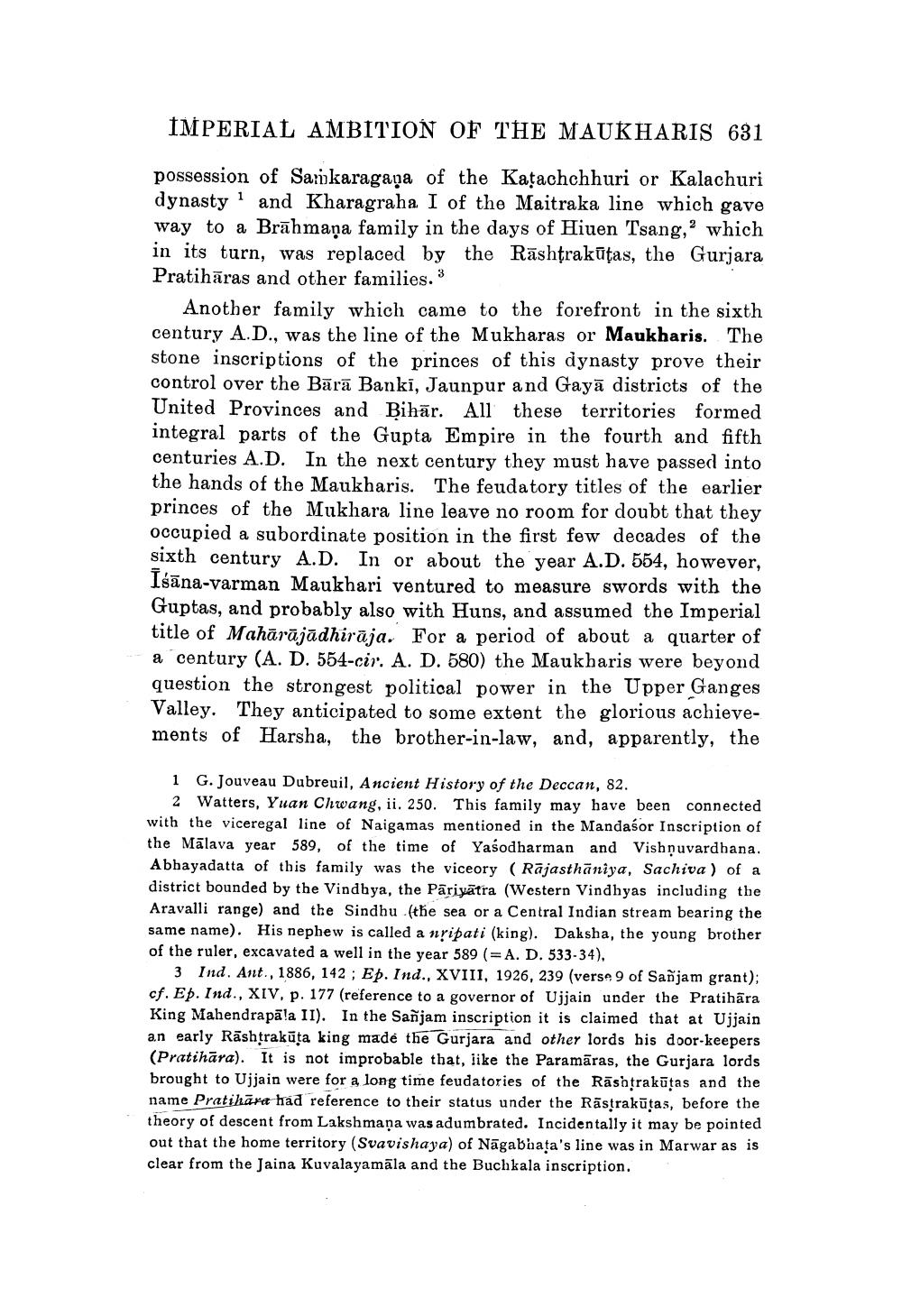________________
IMPERIAL AMBITION OF THE MAUKHARIS 631
possession of Sa karagana of the Katachchhuri or Kalachuri dynasty 1 and Kharagraha I of the Maitraka line which gave way to a Brāhmana family in the days of Hiuen Tsang," which in its turn, was replaced by the Rāshțrakūtas, the Gurjara Pratihāras and other families. 3
Another family which came to the forefront in the sixth century A.D., was the line of the Mukharas or Maukharis. The stone inscriptions of the princes of this dynasty prove their control over the Bārā Banki, Jaunpur and Gayā districts of the United Provinces and Bihār. All these territories formed integral parts of the Gupta Empire in the fourth and fifth centuries A.D. In the next century they must have passed into the hands of the Maukharis. The feudatory titles of the earlier princes of the Mukhara line leave no room for doubt that they occupied a subordinate position in the first few decades of the sixth century A.D. In or about the year A.D. 554, however, Išāna-varman Maukhari ventured to measure swords with the Guptas, and probably also with Huns, and assumed the Imperial title of Mahārājādhirāja. For a period of about a quarter of a century (A. D. 554-cir. A. D. 580) the Maukharis were beyond question the strongest political power in the Upper Ganges Valley. They anticipated to some extent the glorious achievements of Harsha, the brother-in-law, and, apparently, the
1 G. Jouveau Dubreuil, Ancient History of the Deccan, 82.
2 Watters. Yuan Chwang, ii. 250. This family may have been connected with the viceregal line of Naigamas mentioned in the Mandaśor Inscription of the Mālava year 589, of the time of Yasodharman and Vishņuvardhana. Abhayadatta of this family was the viceory (Rajasthāniya, Sachiva ) of a district bounded by the Vindhya, the Pāriyātra (Western Vindhyas including the Aravalli range) and the Sindhu (the sea or a Central Indian stream bearing the same name). His nephew is called a nripati (king). Daksha, the young brother of the ruler, excavated a well in the year 589 (= A. D. 533-34),
3 Ind. Ant., 1886, 142 ; Ep. Ind., XVIII, 1926, 239 (verse 9 of Sañjam grant); cf. Ep. Ind., XIV, p. 177 (reference to a governor of Ujjain under the Pratihāra King Mahendra pāla II). In the Sanjam inscription it is claimed that at Ujjain an early Rāshtrakūta king made the Gurjara and other lords his door-keepers (Pratihāra). It is not improbable that, like the Paramāras, the Gurjara lords brought to Ujjain were for a long time feudatories of the Rashtrakūtas and the name Pratihāra had reference to their status under the Rästrakūtas, before the theory of descent from Lakshmaņa was adumbrated. Incidentally it may be pointed out that the home territory (Svavishaya) of Nāgabhata's line was in Marwar as is clear from the Jaina Kuvalayamāla and the Buchkala inscription.




